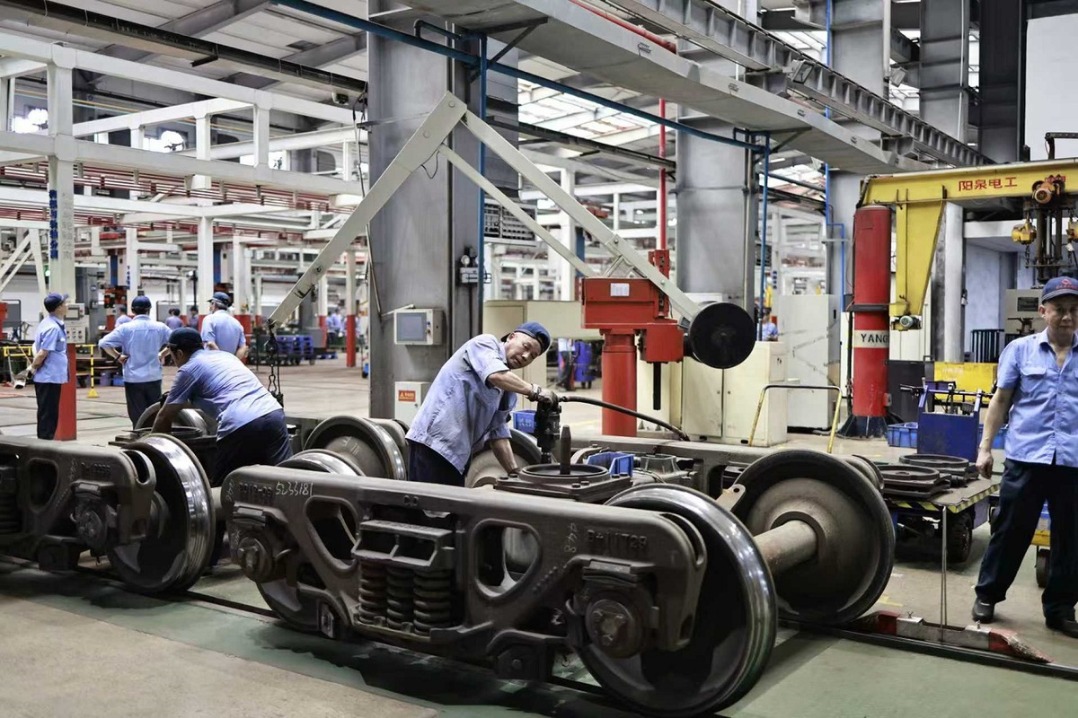Survey seeks views on allowing pets to travel on high-speed trains

A survey of people's opinions on allowing pets to ride on China's high-speed trains has ignited a lively discussion online, with some arguing it would greatly benefit pet owners and others raising concerns about hygiene and practicality.
Although pets are currently not allowed on high-speed trains, the railway operator has begun exploring the possibility of permitting small pets to travel under specific conditions.
The China Railway Customer Service Center recently launched a survey to gauge passengers' opinions on the issue. Passengers can scan a QR code on their seat and access the 12306 application, the official railway service platform, to answer 15 questions related to the topic of "Pet Travel on High-Speed Trains". The questions cover the necessity of pet transportation by high-speed train, the types of pets to be transported, the frequency and price of such services, protective measures and suggestions from people who do not own pets.
The survey has spawned a dedicated topic on the Sina Weibo social media platform that had over 1 million views by Monday.
"In recent years, we have received numerous inquiries from passengers regarding the possibility of pet transportation on high-speed trains," the center said in a statement.
"Based on feedback from the survey, we will further delve into the feasibility of high-speed pet transportation. We welcome suggestions and opinions from the public."
Some netizens support the idea of allowing pets to ride on high-speed trains, citing the revenue potential and the convenience it would offer to pet owners.
A few years ago, a woman surnamed Su faced challenges transporting her two cats from Jiangsu province to Beijing. She resorted to a carpool service, which cost 2,500 yuan ($350) — more than four times the price of a second-class bullet train ticket. The road trip took around 13 hours, while the bullet train would have taken less than six.
Su struggled to find carpool service providers willing to accommodate her cats. She also explored other options, including air and road transport.
"Cats are sensitive creatures, akin to little babies. I can't be at ease unless they are with me," Su said, expressing optimism about the survey while acknowledging the practical hurdles that remain.
A resident of Xiamen, Fujian province, surnamed Guo said they preferred driving with pets due to the many practical concerns — such as illness or accidents — during their transportation.
In the United States and the United Kingdom, pets are allowed on certain railway routes under specific conditions. In China, an updated regulation for passenger trains, implemented in July 2022, prohibits the carriage of live chickens and ducks.
Exceptions are made for some slower trains primarily serving less-developed regions.
With the continuous expansion of the railway network, rail travel has become increasingly popular in China. According to China State Railway Group, the national railway operator, there were 3.68 billion trips made last year.
As the demand for pet-friendly travel options grows and discussions around pet policies on high-speed trains persist, there is hope a balanced solution can be found that meets the needs of both pet owners and other passengers.
- Seven dead after Fujian coal mine incident
- Guangdong reports fall in cases of chikungunya fever
- Rare tiger fight caught on camera in Jilin
- China exports Guangming 2 broiler chickens to Saudi Arabia
- 7 killed in coal mine accident in East China's Fujian province
- Shenzhen snack shop's kind act goes viral




































